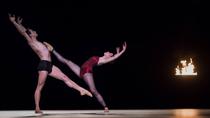Welcome back, everyone. Here we are with another interview, this time with Cora Bos-Kroese. Cora recently set Jiri Kylian’s Bella Figura on us at Les Ballets de Monte Carlo, and she was a blast to work with. Back in the day she was a fantastic dancer who worked intimately with Jiri Kylian. These days she splits her time between setting his ballets all over the world and running her own dance projects in The Netherlands.
I sat down with her to have a conversation about what she’s learned from working with Kylian (and Forsythe!), advice she has for dancers, and her own personal projects in the dance world. I’ve broken up our conversation into three parts, which will come out when ready. In this first section, we talk about the audition process, and the qualities she looks for when running an audition for a Kylian ballet (hint: it’s not perfect ballet technique).

C: And then for some pieces it’s less important and it has to be movers. So some things people can get away with if they’re a bit more rounded… but he liked his women feminine. It wasn’t so tight – maybe the ballet aesthetic is a bit to another extreme and doesn’t work. When I choose men I also… certain pieces are about male and female energy. So when you start to look at the man and he looks more flourishing than the girl I’m like “Whaaa…” It’s difficult.
C: We were speaking about that last night, Urtzi [Aranburu] and I. We’ve both been to different companies, some more from a modern background, some more from a classical background, and for certain pieces – like 90% of Jiri’s work – it’s easier to go to a classical company and get them to get moving more. Easier than when you have a real moving company that cannot create any form. It’s harder because we [at NDT] also used that classical class as a base; it’s not like we’re going to do Martha Graham class in the morning and then do Jiri’s work – so there is always that classical essence.

L: So you need to be able to make shapes.

Thanks for reading. In the second part of our conversation, Cora and I talk about her many experiences with Kylian, what she learned from working with him, and what makes his work special. Check out part 2 here.
This is wonderful Lucas! Thank you for sharing it. Looking forward to the next installment :).
LikeLike
My pleasure. But man, transcribing audio is grueling work. Not sure how many more I can do in this form. I wonder how much interest there is in audio…
LikeLike
I’m sure listening would be good too! Interviews usually take me awhile, because I let the conversation stew, and then re-write it from notes. I like the result, but it’s no easy task. I think you’re doing great work!
LikeLike
Thanks Lucy 🙂
LikeLike